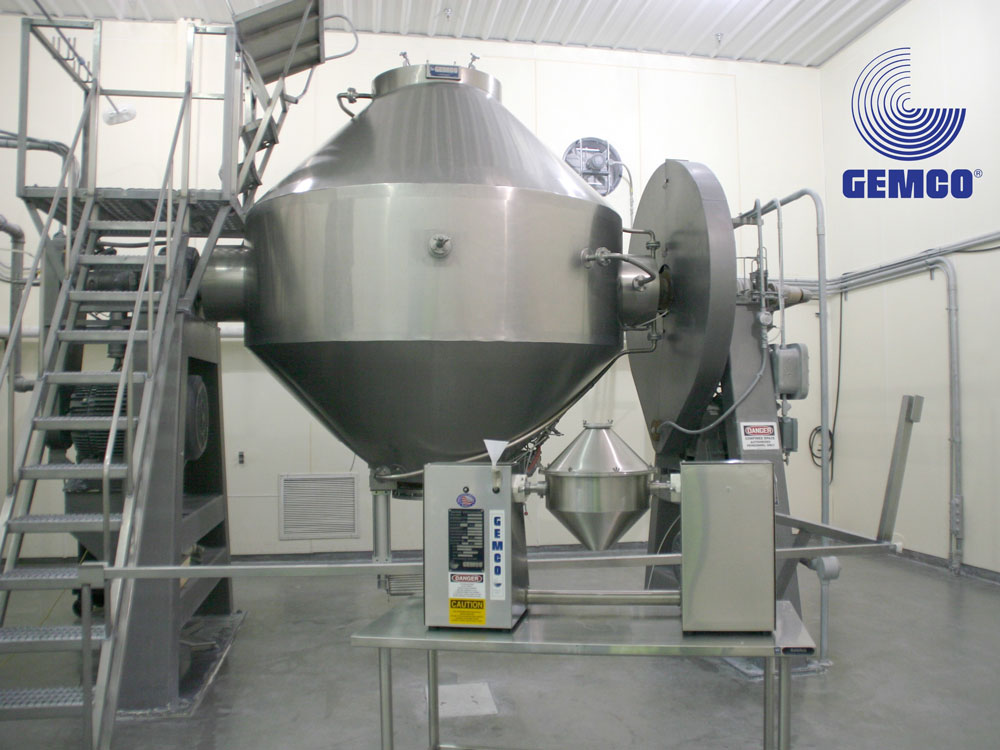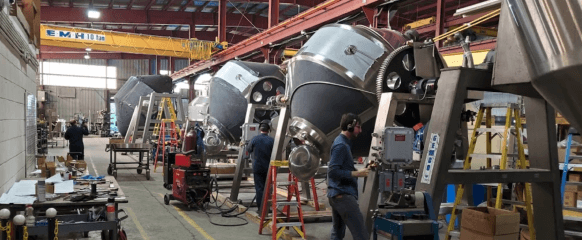6 Essential Strategies to Prevent Cross Contamination
In the world of powder production, cross contamination is a serious issue that can disrupt entire operations. Whether you’re working with pharmaceuticals, chemicals, or food products, even a small amount of unintended contamination can lead to major problems, including compromised quality, safety risks, and expensive recalls. For industries dealing with metal powders—like additive manufacturing, aerospace, and medical devices—the stakes are even higher. Contaminants such as ceramic fragments and talc can sneak in during atomization, handling, or re-use, threatening the integrity of the final product. Addressing this challenge requires a careful and thorough approach to ensure every step of the process maintains the highest standards of purity and quality.
Preventing cross contamination requires a comprehensive approach that includes understanding the materials being used, maintaining equipment, and implementing stringent cleaning protocols. By addressing these factors, manufacturers can ensure their products meet the highest standards of purity and quality. This article outlines six essential strategies to help prevent cross contamination and maintain the integrity of your processes.

- Full Characterization of Your Powders or Final Product Understanding the properties of your powders or final product is the first step in preventing cross contamination. GEMCO customers struggling with cross contamination should thoroughly check the density, particle size, shape, and other relevant characteristics. This detailed characterization helps in identifying potential contamination sources and implementing appropriate control measures.
Knowing the density, shape, moisture content, and physical characteristics of your powders is crucial for creating the perfect formulation before blending. Density, in particular, is a key parameter that affects precise and consistent outcomes in various industries, including pharmaceuticals, chemicals, and food processing. Misconceptions regarding the relationship between density and weight are common, but density represents the concentration of a substance within a specific volume.
Consistent homogeneity of powder mixtures is essential for ensuring stable quality and desirable properties in products. Any successful blend needs to start with careful powder characterization. Understanding numerous criteria that may impact the overall blend is necessary to foresee and handle any issues effectively.
- Understanding Your Machine A deep understanding of your machine’s technology and capabilities is crucial. This includes knowing how to fully design and implement processes and understanding where they are going. GEMCO’s recipe management system can be a valuable tool in this regard, helping to standardize processes and reduce the risk of contamination. Make sure your team is well-trained and knowledgeable about the machine’s functionalities.
- Validate Processes Based on Analytical Data Validation of processes using analytical data is essential to ensure that they are effective in preventing cross contamination. Regular testing and monitoring can help identify any deviations from the expected results and allow for timely corrective actions. This data-driven approach ensures that your processes consistently meet the required standards.
- Locating Sources of Contamination Identifying where contamination is occurring is key to addressing the issue. Common sources include filters, packing, gaskets, and other components. Regular inspections and maintenance can help locate these sources and prevent contamination. Implementing a robust inspection routine can significantly reduce the risk of cross contamination.
- Follow GEMCO Preventative Maintenance Schedule Adhering to GEMCO’s Preventative Maintenance Schedule is crucial for maintaining the optimal performance of your machines and preventing cross contamination. Regular maintenance tasks, such as inspecting drive motors, checking air system filters, and lubricating components, ensure that your equipment is functioning correctly and efficiently. This proactive approach helps in identifying potential issues before they lead to contamination.
- Cleaning Procedures Proper cleaning procedures are vital to prevent cross-contamination. Ensure that your machines are cleaned thoroughly and regularly, following the manufacturer’s instructions. This includes disassembling parts where necessary and using appropriate cleaning agents. Regular cleaning prevents the buildup of contaminants and ensures that each batch remains pure.

Vacuum Tumble Dryers
Vacuum tumble dryers are essential in handling metal powders, particularly in industries like additive manufacturing, aerospace, and medical devices. Here’s how they play a crucial role in preventing cross contamination:
- Efficient Drying at Lower Temperatures:
- How It Helps: The vacuum environment lowers the boiling point of moisture, allowing for efficient drying at lower temperatures. This is crucial for preventing oxidation or other unwanted reactions with metal powder, which can introduce contaminants.
- Potential Risk: If not properly maintained, the vacuum system itself can become a source of contamination. Regular checks and maintenance are essential.
- Uniform Drying:
- How It Helps: These dryers often feature a rotating drum and internal mixing elements to ensure uniform drying. This uniformity prevents hotspots where contaminants could thrive.
- Potential Risk: Inconsistent agitation or malfunctioning mixing elements can lead to uneven drying, creating pockets where contaminants can accumulate.
- Integration with Powder Recovery and Sieving:
- How It Helps: Advanced systems integrate vacuum drying with powder recovery and sieving, ensuring that any contaminants are filtered out during the process.
- Potential Risk: If the sieving and recovery systems are not properly calibrated or cleaned, they can reintroduce contaminants into the powder.
- Material of Construction:
- How It Helps: Using stainless steel (e.g., 304L or 316L) for construction ensures inertness and prevents contamination of the metal powder.
- Potential Risk: If the materials degrade or are not properly maintained, they can become a source of contamination.
- Precise Temperature and Vacuum Control:
- How It Helps: Precise control over temperature and vacuum levels ensures that the drying process does not alter the powder’s properties, maintaining its purity.
- Potential Risk: Inaccurate control systems can lead to improper drying conditions, which might introduce contaminants.
- Safety Features:
- How It Helps: Features like inert gas purging prevent oxidation or explosions, which can introduce contaminants.
- Potential Risk: Failure in safety systems can lead to contamination through oxidation or other chemical reactions.
- Automation and Control Systems:
- How It Helps: Automated systems with programmable cycles and moisture sensors ensure consistent and repeatable drying processes, reducing the risk of human error.
- Potential Risk: Malfunctions in automation can lead to inconsistent drying and potential contamination.
Technical Specifications and Features of Vacuum Tumble Dryers:
- Capacity: The amount of metal powder the dryer can handle in a single batch or continuously (kg/hour).
- Materials of Construction: Often stainless steel (various grades like 304L or 316L) to ensure inertness and prevent contamination of the metal powder. Some might have powder-coated exteriors for durability.
- Temperature Control: Precise temperature control is vital to avoid altering the powder’s properties.
- Vacuum Levels: The achievable vacuum pressure, which affects drying efficiency and temperature requirements.
- Agitation/Mixing Mechanisms: The design of internal paddles or other elements to ensure uniform drying.
- Safety Features: Especially important for handling potentially reactive metal powders (e.g., inert gas purging to prevent oxidation or explosion). Compliance with safety standards like ATEX for dust explosion prevention might be a key differentiator.
- Automation and Control Systems: Features like programmable cycles, moisture sensors, and automated loading/unloading.
- Integration with Powder Handling Systems: Some dryers are designed to integrate with automated powder recovery, sieving, and transport systems used in additive manufacturing.
- GMP Compliance: If the metal powder is intended for medical applications, the dryer might need to meet Good Manufacturing Practice standards, with specific requirements for cleanability and documentation.
Leveraging the capabilities of vacuum tumble dryers can significantly reduce the risk of cross contamination. Regular maintenance, proper calibration, and thorough cleaning are essential to ensure these systems work effectively and maintain the purity of metal powders.
Considering the six factors mentioned in this article, along with the specific features of vacuum tumble dryers, will help minimize cross contamination in your processes. Implementing these practices will maintain the quality and integrity of your products, ensuring customer satisfaction and compliance with industry standards.


